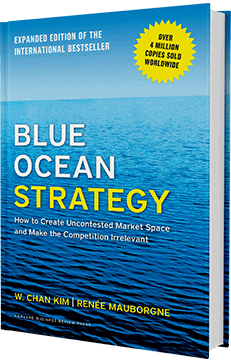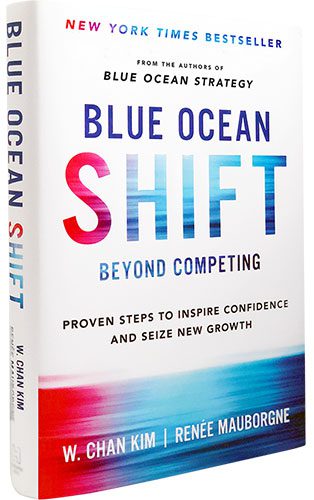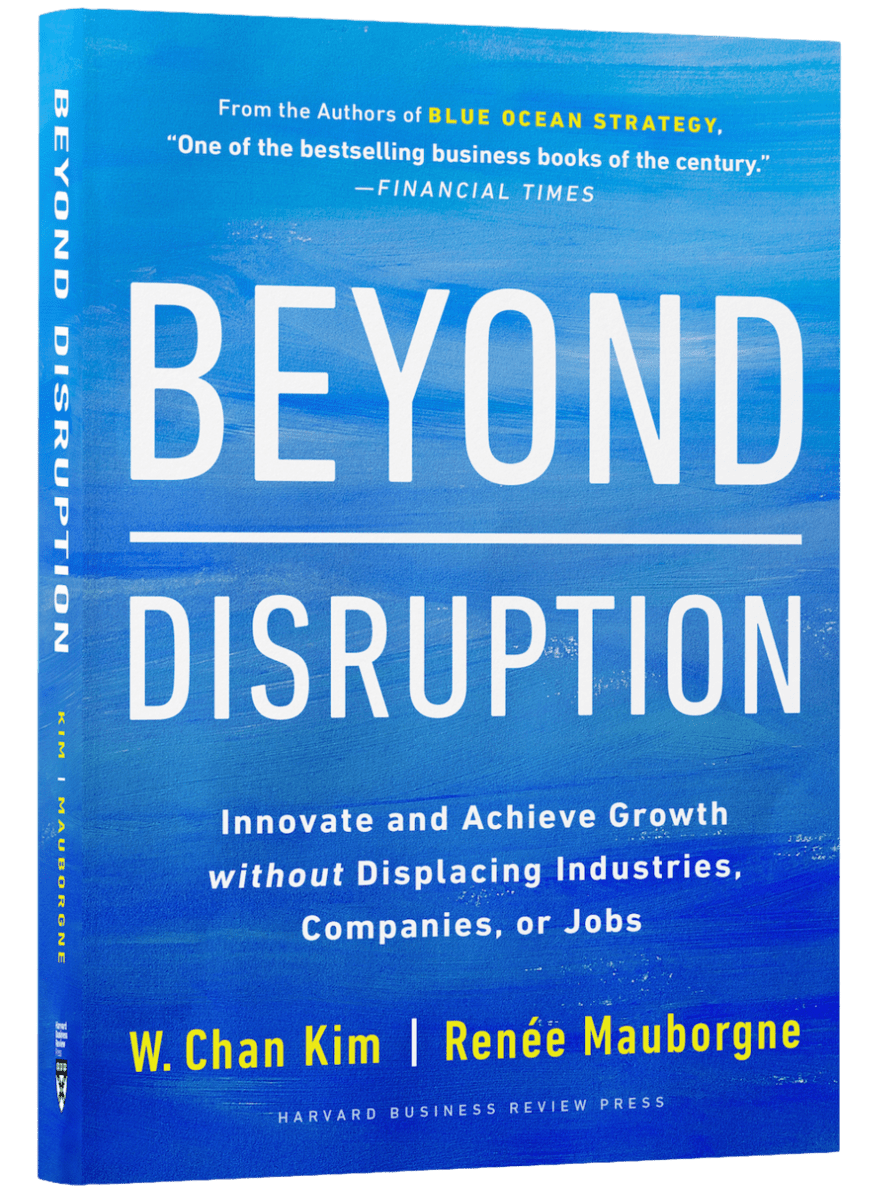Blue Ocean Strategy is a market-creating approach that aims to make the competition irrelevant. It’s about creating and capturing uncontested market space, thereby unlocking new demand and achieving profitable growth. This strategy contrasts sharply with traditional competitive strategies, which focus on battling over existing customers in crowded markets. This comprehensive guide explores the core principles of Blue Ocean Strategy, compares it with traditional Red Ocean Strategy, and delves into its practical application through tools and frameworks.
Understanding Red and Blue Oceans
The market universe is divided into two distinct landscapes: red oceans and blue oceans. These terms, coined by Chan Kim and Renée Mauborgne in their book Blue Ocean Strategy, represent contrasting approaches to market competition.
Navigating the Red Ocean
Red oceans represent all existing industries – the known market space. In these established markets, industry boundaries are clearly defined, and the competitive rules are well-understood. Companies operating in red oceans focus on outperforming rivals to capture a larger share of existing demand. As the market becomes more crowded, profits and growth opportunities diminish, leading to intense, often cutthroat, competition – hence the term “red ocean,” symbolizing a bloody battleground.
Charting a Course in the Blue Ocean
Blue oceans, on the other hand, represent all the industries not in existence today – the unknown market space, untainted by competition. In blue oceans, demand is created rather than fought over, offering vast opportunities for profitable and rapid growth. Competition becomes irrelevant because the rules of the game are yet to be established. The “blue ocean” analogy signifies the vast, deep, and powerful potential of unexplored market space.
Blue Ocean Strategy vs. Red Ocean Strategy: A Key Comparison
The fundamental difference between these two strategic approaches lies in their focus. Red ocean strategy centers on competing within existing market boundaries, while blue ocean strategy aims to create entirely new market spaces.
Red Ocean Strategy:
- Competition: Competes in existing market space
- Competitive Approach: Aims to beat the competition
- Demand: Exploits existing demand
- Value-Cost Trade-Off: Makes the value-cost trade-off
- Strategic Alignment: Aligns the whole system of a firm’s activities with its strategic choice of differentiation or low cost.
Blue Ocean Strategy:
- Market Creation: Creates uncontested market space
- Competitive Approach: Makes the competition irrelevant
- Demand: Creates and captures new demand
- Value-Cost Trade-Off: Breaks the value-cost trade-off
- Strategic Alignment: Aligns the whole system of a firm’s activities in pursuit of both differentiation and low cost.
© Chan Kim & Renée Mauborgne. All rights reserved.
Read more on Red Ocean vs. Blue Ocean Strategy
The Minds Behind Blue Ocean Strategy: Chan Kim and Renée Mauborgne
1 Management Thinkers in the World
Chan Kim and Renée Mauborgne are the authors of the bestselling books Blue Ocean Strategy and Blue Ocean Shift. Their work has revolutionized strategic thinking, offering a practical framework for creating new market spaces and achieving sustainable growth. In 2023, they were recognized as two of the four leading thinkers in the 100 years of Harvard Business Review’s publication, and in 2019, they were named the #1 Management Thinkers in the World by Thinkers50.
Key Principles of Blue Ocean Strategy and Shift
Blue Ocean Strategy and Shift provide a comprehensive approach to market creation, grounded in data and practical tools.
Data-Driven: Based on extensive research spanning over 150 strategic moves across 30 industries and 100 years.
Differentiation and Low Cost: Pursues both differentiation and low cost simultaneously, creating a value innovation.
Uncontested Market Space: Aims to create new market space rather than competing in existing crowded markets.
Tools and Frameworks: Provides practical tools and frameworks for identifying and creating blue ocean opportunities.
Step-by-Step Process: Offers a systematic process for shifting from red oceans to blue oceans.
Risk Mitigation: Helps maximize opportunities while minimizing risks through robust testing and refinement of ideas.
Integrated Execution: Builds execution into the strategy development process, ensuring alignment and ownership.
Win-Win Outcome: Aligns value, profit, and people propositions to create a win-win outcome for all stakeholders.
Blue Ocean Strategy Tools and Frameworks
Blue Ocean Strategy provides a range of practical tools and frameworks designed to help organizations move from competitive red oceans to uncontested blue ocean market spaces. These tools empower organizations to systematically analyze their current market situation, identify opportunities for innovation, and develop robust strategies for creating new demand.
Learn more about Blue Ocean Strategy tools
Blue Ocean Strategy Books: A Deeper Dive
The groundbreaking concepts of Blue Ocean Strategy are detailed in two influential books: Blue Ocean Strategy and Blue Ocean Shift.
 blue ocean strategy book cover
blue ocean strategy book cover
Blue Ocean Strategy: How to Create Uncontested Market Space and Make the Competition Irrelevant
This seminal work introduces the concepts of red and blue oceans and challenges traditional competitive thinking. It provides a systematic approach to creating blue oceans and offers practical tools for making the competition irrelevant.
Read the book
Listen to the book
Learn more about the book
 blue ocean strategy book cover
blue ocean strategy book cover
Blue Ocean Shift: Beyond Competing – Proven Steps to Inspire Confidence and Seize New Growth
This follow-up book builds on the original Blue Ocean Strategy concepts and provides a practical framework for implementing the strategy within organizations. It emphasizes the importance of human-centered design and offers a step-by-step process for achieving a blue ocean shift.
Read the book
Listen to the book
Learn more about the book
These books have collectively sold over 4.5 million copies worldwide, demonstrating their profound impact on strategic thinking.
Beyond Disruption: A New Approach to Innovation
Beyond Disruption introduces the concept of “nondisruptive creation,” a new approach to innovation that focuses on creating new market space without displacing existing industries, companies, or jobs.
“Nondisruptive creation is a pathbreaking new concept that shows leaders and innovators how business can be a force for good. This book will become a business classic.” —Jake Cohen, Senior Associate Dean at the MIT Sloan School of Management.
Learn more about Beyond Disruption
Blue Ocean Sprint with AI Navigator
 NEW
NEW![]() 44b8c21-a7b2-2c0c-fcb7-31e5112b5867_PI_page_icons
44b8c21-a7b2-2c0c-fcb7-31e5112b5867_PI_page_icons
The Blue Ocean Sprint, powered by an AI Navigator, offers a fast-tracked approach to applying Blue Ocean Strategy principles. This program provides practical tools and guidance for redefining your market and seizing new growth opportunities.
Real-World Examples of Blue Ocean Strategy
 Powerful examples of blue ocean strategy
Powerful examples of blue ocean strategy
Numerous companies across various industries have successfully implemented Blue Ocean Strategy to achieve remarkable growth. These real-world examples demonstrate the power of creating new market space and making the competition irrelevant.
Read the article on Blue Ocean Strategy examples
FAQ: Addressing Common Questions about Blue Ocean Strategy
Q: How does Blue Ocean Strategy differ from traditional strategic planning?
A: Traditional strategic planning often focuses on competing within existing market boundaries, while Blue Ocean Strategy emphasizes creating new, uncontested market spaces. This shift in focus allows companies to escape the limitations of traditional competitive dynamics and unlock new growth opportunities.
Q: Is Blue Ocean Strategy only applicable to large corporations?
A: No, Blue Ocean Strategy principles can be applied by organizations of all sizes, from startups to multinational corporations. The core principles of market creation and value innovation are relevant across different industries and scales of operation.
Q: What are the key challenges in implementing Blue Ocean Strategy?
A: Implementing Blue Ocean Strategy requires a shift in mindset and a willingness to challenge conventional wisdom. Some common challenges include overcoming organizational inertia, managing the risks associated with creating new markets, and aligning the organization around the new strategic direction.
Q: Where can I find more resources to learn about Blue Ocean Strategy?
A: The Blue Ocean Strategy website (www.blueoceanstrategy.com) offers a wealth of resources, including articles, tools, frameworks, and information about the authors’ books and online courses.
We encourage you to share your questions and insights about Blue Ocean Strategy in the comments below. Let’s continue the conversation and explore the vast potential of market creation together.




